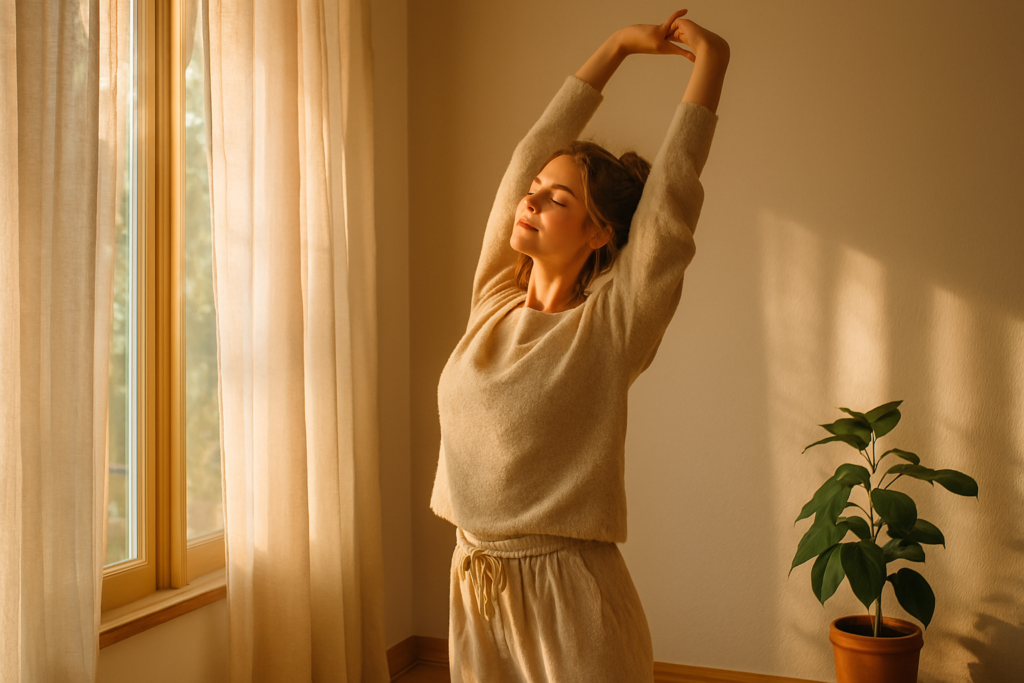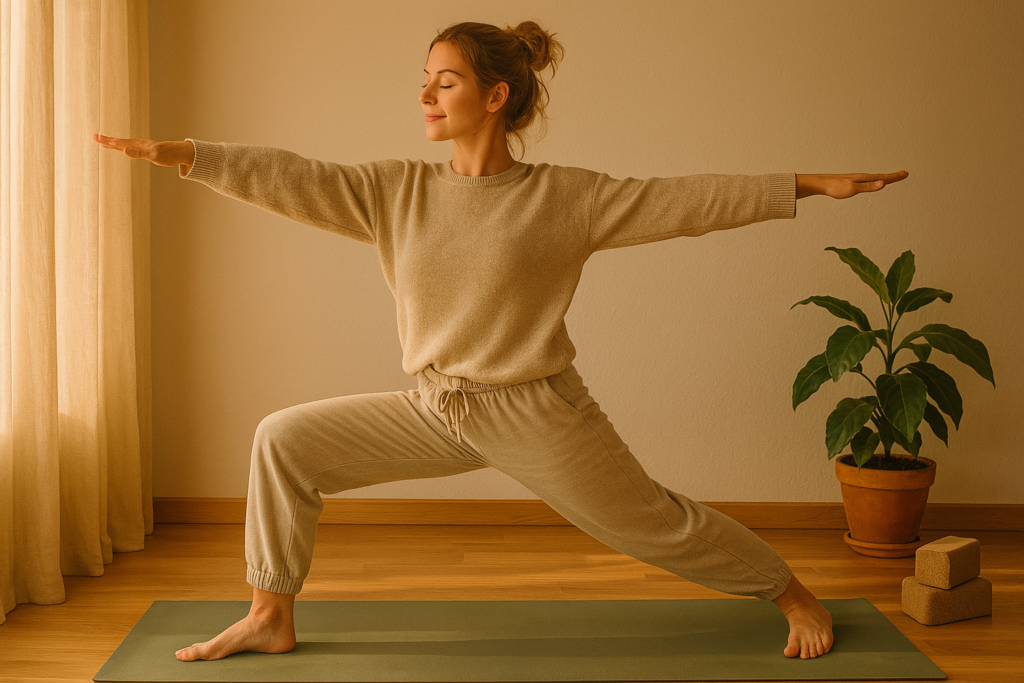Understanding Movement for Mental Clarity
The concept of movement is intricately linked to mental clarity, establishing a profound connection between physical activity and emotional wellbeing. Engaging in gentle movement practices—such as yoga, tai chi, or simple stretching—can significantly enhance cognitive function, promoting a serene and focused mind. The core idea behind mindful movement lies in the combination of physical and mental engagement, allowing individuals to align their movements with their breath and intentions, thereby fostering a sense of presence and awareness.
Physiologically, movement affects the brain in various positive ways. When we engage in physical activity, our bodies release endorphins, which are neurotransmitters that help reduce stress and anxiety. This biochemical shift creates a more conducive environment for mental clarity, aiding in the alleviation of overwhelming thoughts and providing a tranquil mental state. Furthermore, physical activity increases blood circulation, delivering essential nutrients and oxygen to the brain, thereby enhancing cognitive abilities and focus.
Mindful movement practices emphasize the importance of being aware of one’s body and surroundings, facilitating a deeper connection with oneself. This practice allows individuals to observe their thoughts and emotions non-judgmentally, promoting emotional resilience. As stress and distractions diminish, individuals can cultivate a clearer perspective and engage in more productive thinking processes. Adopting gentle flow practices as part of a self-care routine encourages not only physical health but also mental clarity—a dual benefit that echoes throughout daily life.
Ultimately, integrating movement into one’s daily routine serves as a powerful tool for enhancing mental clarity. By embracing gentle movement practices, individuals can develop a stronger sense of mindfulness, emotional balance, and cognitive sharpness, reinforcing the importance of physical activity for mental health.

Creating a Serene Space for Gentle Movement
Establishing a tranquil environment is crucial for enhancing one’s experience of gentle flow practices at home. The first step towards creating this serene space involves decluttering physical surroundings. A tidy area fosters mental clarity, allowing practitioners to focus solely on their movements and intentions. Removing unnecessary items from the space can help reduce distractions and create an atmosphere conducive to relaxation and mindfulness.
Next, consider the colors within your environment. Calming hues, such as soft blues, gentle greens, or muted pastels, can significantly influence one’s mood. These colors promote feelings of tranquility, supporting the objectives of gentle movement practices. It is advisable to incorporate these shades into the walls, furnishings, or even decorative elements within the space dedicated to gentle flow practices.
The inclusion of calming scents can further enhance the serene environment. Aromatherapy plays an instrumental role in fostering relaxation and mental clarity. Essential oils such as lavender, chamomile, or sandalwood can create an inviting atmosphere, paving the way for deeper connection during gentle movements. Diffusing these scents or using scented candles can make a noticeable difference in the ambiance of your movement area.
In addition to visual and olfactory elements, integrating soothing sounds can enhance the overall experience. Nature sounds, gentle music, or even guided meditations can serve as background audio, promoting relaxation and focus. By surrounding oneself with calming noises, practitioners can more easily immerse themselves in the flow of gentle movement, reducing stress and distraction.
Finally, setting an intention for this dedicated movement space is vital. This intention acts as a grounding anchor, cultivating mindfulness and encouraging individuals to engage in their practices with purpose and clarity. By taking these steps, individuals can transform their homes into a sanctuary for gentle movement, allowing for a deeper connection with themselves. Creating this harmonious environment invites a peaceful approach to movement, fostering both mental clarity and emotional wellbeing.
Incorporating Breath and Flow into Your Routine
Integrating intentional movement and breath into daily routines can significantly enhance mental clarity and emotional well-being. By setting aside moments throughout the day for gentle flow practices, individuals can cultivate a deeper connection to their breath and body, which can lead to improved mindfulness. One effective way to start this practice is in the morning, allowing for a refreshing and positive tone to the day ahead.
To begin, find a comfortable space where you can move freely. Start with a simple breathing exercise: inhale deeply through the nose, expanding the belly, and then exhale gently through the mouth. Repeat this five to ten times, allowing attention to center on the breath. As you become more attuned, introduce gentle movements like neck rolls and shoulder shrugs, synchronizing each motion with the breath. For instance, lift your shoulders towards your ears on an inhale, then release on the exhale. This promotes relaxation and encourages the flow of energy throughout the body.
Incorporating flowing transitions, such as transitioning from a standing forward bend to a gentle backbend, can further enhance the physical and mental benefits. Each movement should be executed slowly and mindfully, with awareness directed towards sensations in the body. Allow thoughts to come and go, grounding yourself in the present moment. This practice can also be extended to the evening, where you may focus on gentle stretches and calming breaths, helping to unwind and prepare for restful sleep.
Throughout these practices, it is essential to emphasize a sense of presence and gratitude. Recognize the effort your body makes during these moments and honor your emotions as they arise. By fostering this connection between breath and movement, individuals can continually enrich their mental clarity and well-being, transforming their routines into opportunities for growth and serenity.

Embracing the Journey: Mindfulness Through Movement
Engaging in gentle flow practices at home presents a unique opportunity to cultivate mindfulness and self-discovery. Movement can serve as a powerful tool for enhancing emotional awareness and fostering a deeper connection to one’s inner self. By incorporating consistent gentle movement into daily routines, individuals may experience heightened clarity, balance, and a sense of serenity that transcends the physical realm.
The practice of mindfulness through movement involves not only physical activity but also a focused state of awareness. As one moves, the act becomes a form of meditation where thoughts can be observed without judgment. This ongoing engagement with one’s body can reveal subtleties, breathing patterns, and emotional responses that may often go unnoticed in the hustle of daily life. Each practice becomes a chance to tap into those deeper layers of the self—layers that hold the potential for emotional healing.
By committing to a practice that emphasizes gentleness, consistency, and self-compassion, individuals may notice transformative insights unfolding. Each session allows individuals to reflect upon personal experiences and emotions, facilitating a journey of self-discovery that deepens with time. This journey encourages the understanding that mindfulness is not a destination but an evolving practice, one that celebrates progress in all its forms. As individuals recognize their growth and embrace the learning process, they foster a renewed sense of appreciation for their bodies and minds.
Ultimately, the invitation to integrate movement into your daily life is a celebration of self-love. Each small step taken towards mental clarity and emotional balance enriches the journey, affirming the profound link between body and mind. It is through these gentle practices that one may find peace, acceptance, and a greater appreciation for the present moment. Embracing this journey is not just about achieving mindfulness; it is about loving oneself through the process.







